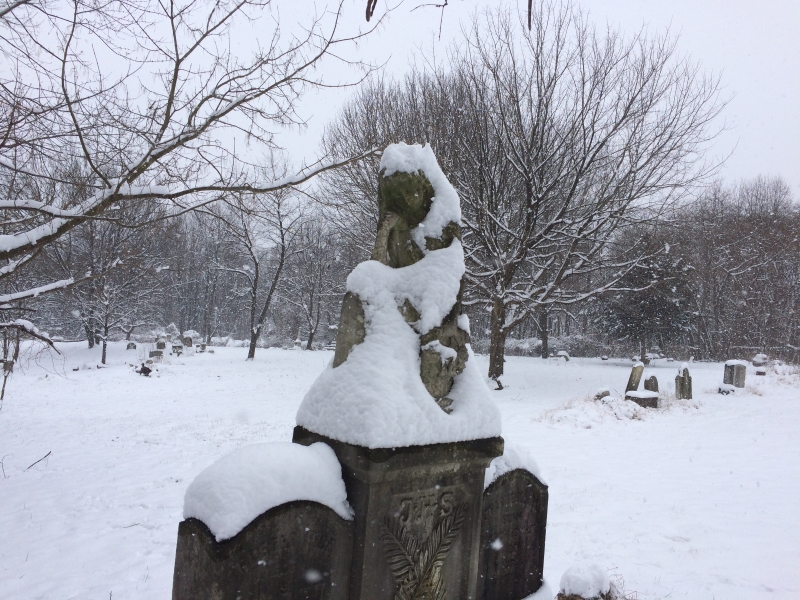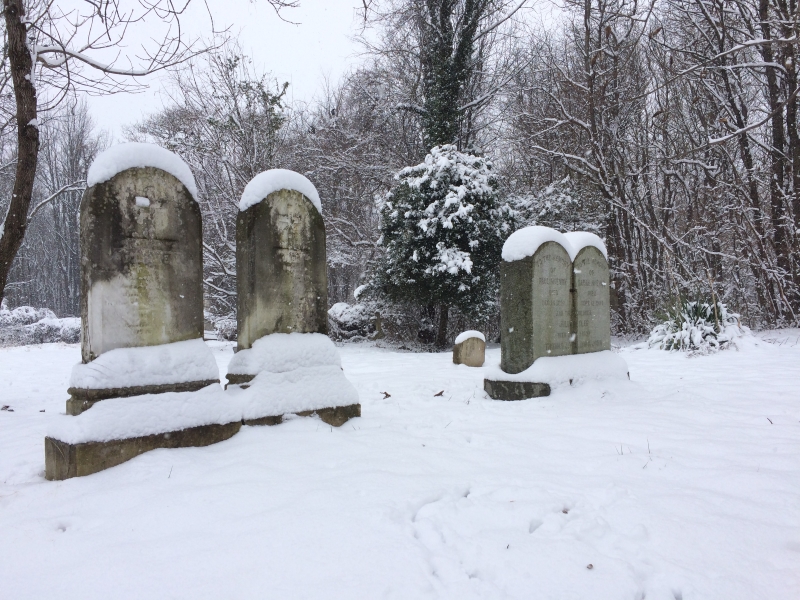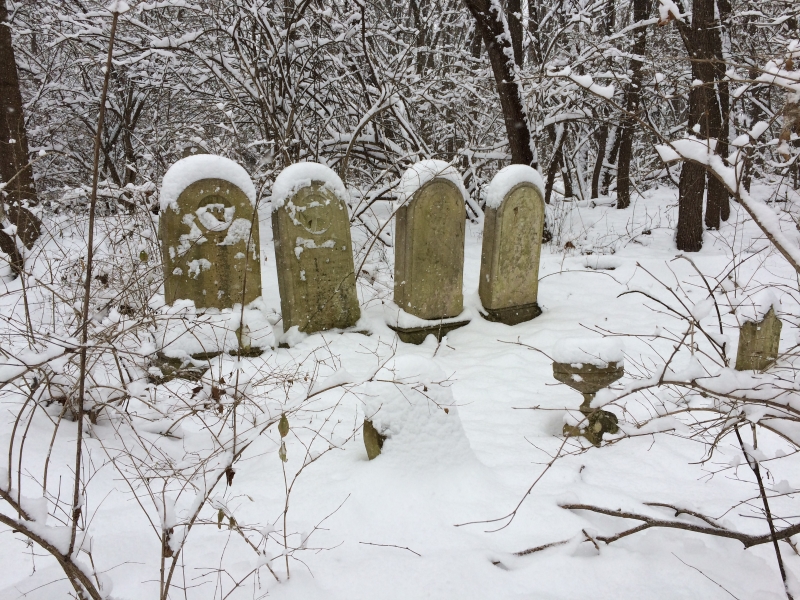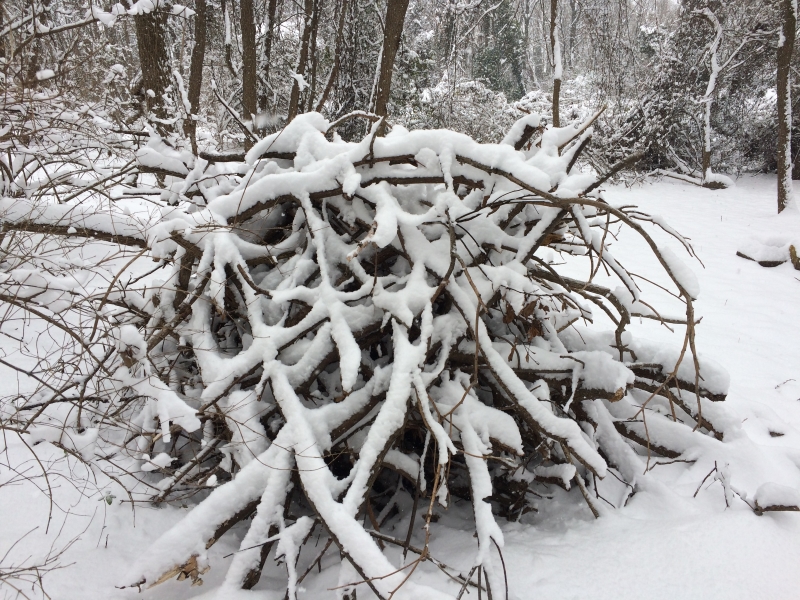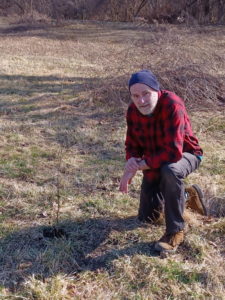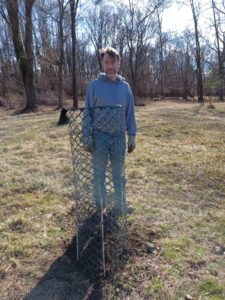
Category Archives: Caretaking
Seedlings Transplanted Along North Fence
By Joe Byrne
Today, with the help of a volunteer (Adam) I was able to get to a little project I’d been meaning to do for a while now. We transplanted some trees along the north fence of the cemetery, in the north-west quadrant.
On the other side of the north fence is an industrial site, including a lot of rusting equipment and shipping containers, as well as a mountain of shredded rubber tires. I thought it would be great to put up some trees to screen the cemetery from the industrial site. My idea was to use two different kind of trees: a top-canopy tree and a mid-level canopy tree. The two trees together, in two parallel rows, would provide a better screen than just the tall trees. The trees would have to be native and it would be great if they were already present in the cemetery. It would also be good if they could withstand the polluted run-off from the industrial site. Even better would be trees that would be unattractive to deer, so the deer wouldn’t crop the trees, or damage the tender trunks by rubbing off the bark with their horns (it’s the bucks that do that, not the does). A few years ago we planted some white pines along the north fence. A few still remain but quite a few of them died due to run-off pollution and damage from deer.
In the cemetery, we found some seedlings that I think fit the criteria listed above. For the top canopy tree, in a row of four closest to the fence, we transplanted some sycamore seedlings. There is already a very large sycamore tree along the north fence and it seems to be doing well. However we figured the very young sycamore trees would initially be susceptible to deer damage, so we put fences around them.
I’ve been experimenting with tree fencing for a while now. Putting up wooden posts and putting metal fencing around them does a pretty good job at protecting the trees, but that’s a lot of work, and it’s unsightly. The alternative I’ve come up with is to use leftover green plastic fencing (a kind of chicken mesh), and s’more sticks (doll rods) that we found at the Maryland Food Bank once upon a time. You cut of a length of fencing, use cheap wire ties to make it a closed circle. Then weave a s’more stick into the fencing and push it into the ground. Do three more in a circle (really, a diamond). After that, secure the bottom of the fencing with metal tent stakes. I found that, with just the s’more sticks, the fencing will topple over in a strong wind. With stakes, they stay upright and secure. The fencing looks kind of flimsy, but it looks solid enough to fool the deer. They could knock it down if they wanted to, but they don’t seem to want to. Even better, from a distance you can hardly see the green fencing.
After we had all the sycamore seedlings in, and fenced off, we planted four red bud trees in a row in front of the sycamores. Red buds are typically about half as high as mature sycamores. We already have some mature red buds in the cemetery, and they produce a lot of seedlings. I’ve transplanted some red bud seedlings before and noticed that the deer don’t mess with them. It might be that when they get bigger, the deer (the bucks) will go after them; so fencing might be necessary later. But for this planting, we left them without fencing.
One project done, but there are still plenty of places to plant more trees in the cemetery. Next time we plant trees, we’ll put the word out so that some those reading this might help out.
Headstone Restoration 1
By Joe Byrne
I decided, as a Lenten project, that I would restore some of the headstones at St. Peter’s Cemetery. The hardest part was deciding where to start. So many of the headstones here are in need of help.
Rather randomly I chose to start with headstones that are (I think) in the so-called “Potter’s Field” section of the cemetery, on the western perimeter.
This was the first stone I worked with. It’s the headstone of Rachel Moulder, who died and was buried in 1935. The work here consisted of moving and straightening the stone.
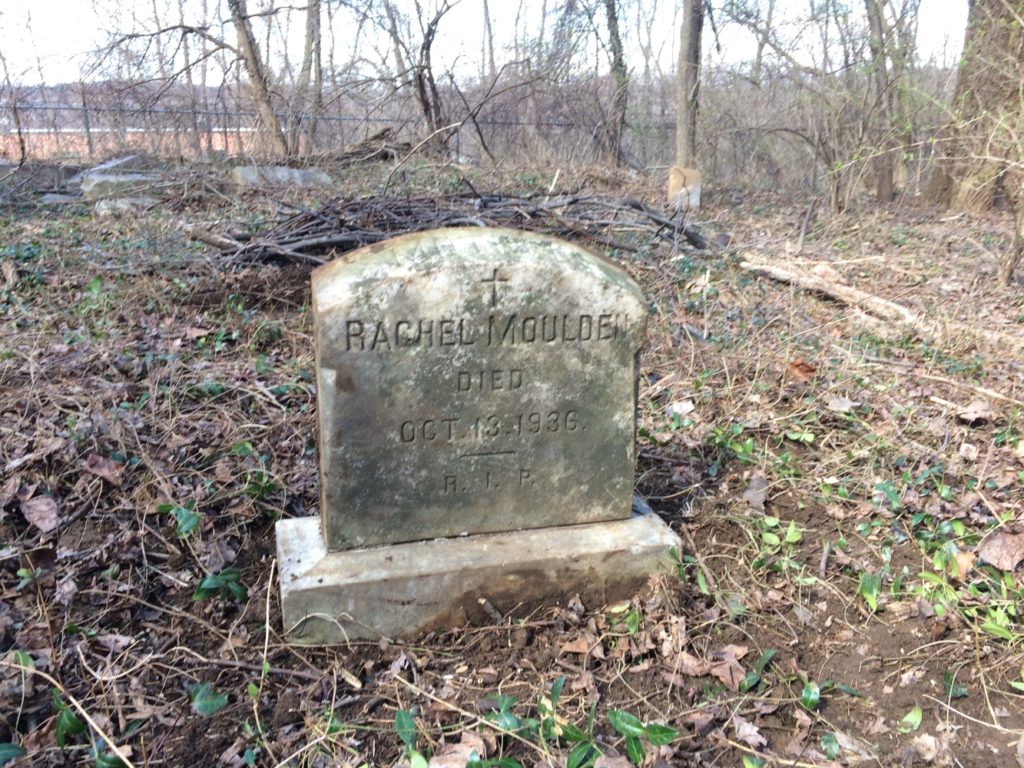
Then I attended to a stone nearby.
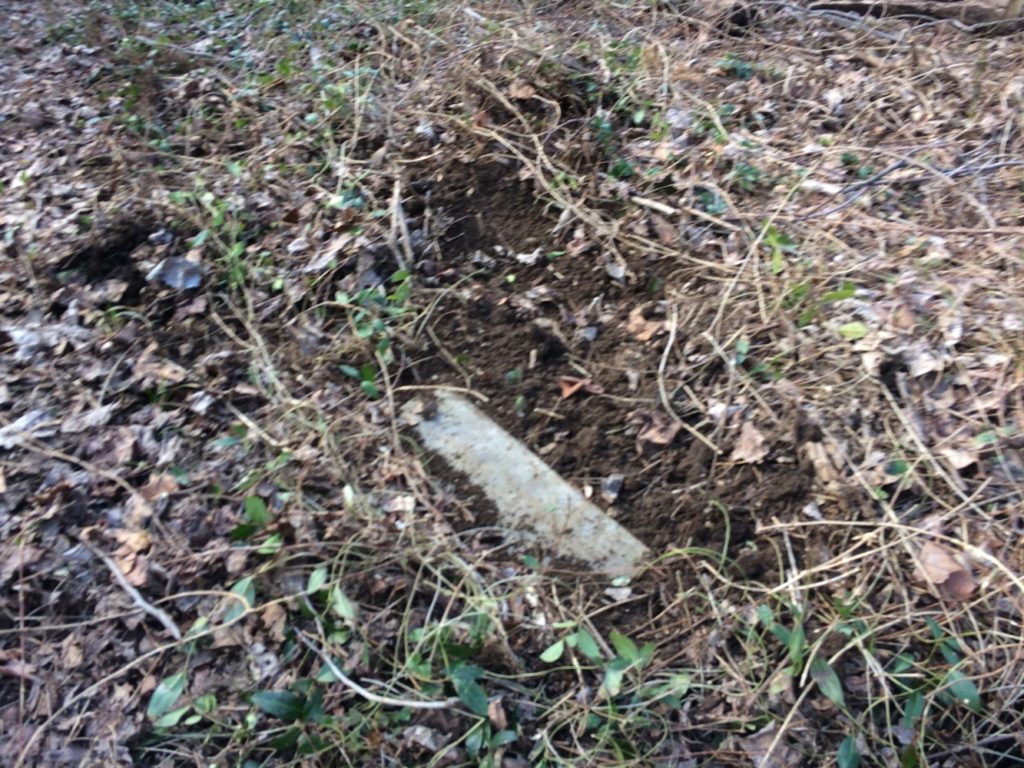
At first I thought it was just a pediment (the base of the headstone), without a headstone. But then I started digging…
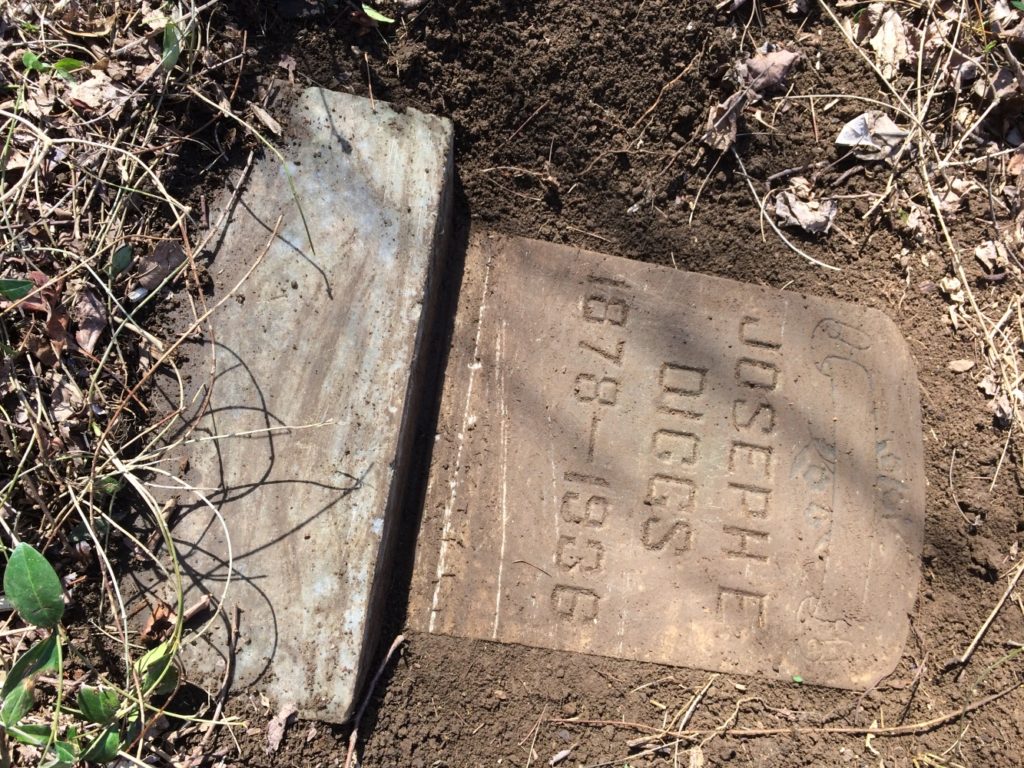
Yes, I had to dig up Joseph Digg’s stone! The amazing thing here is that, even though the stone was buried for who-knows-how-long, the engraved inscription, and the carved designs, have not been worn away.
Here is the gravestone restored.
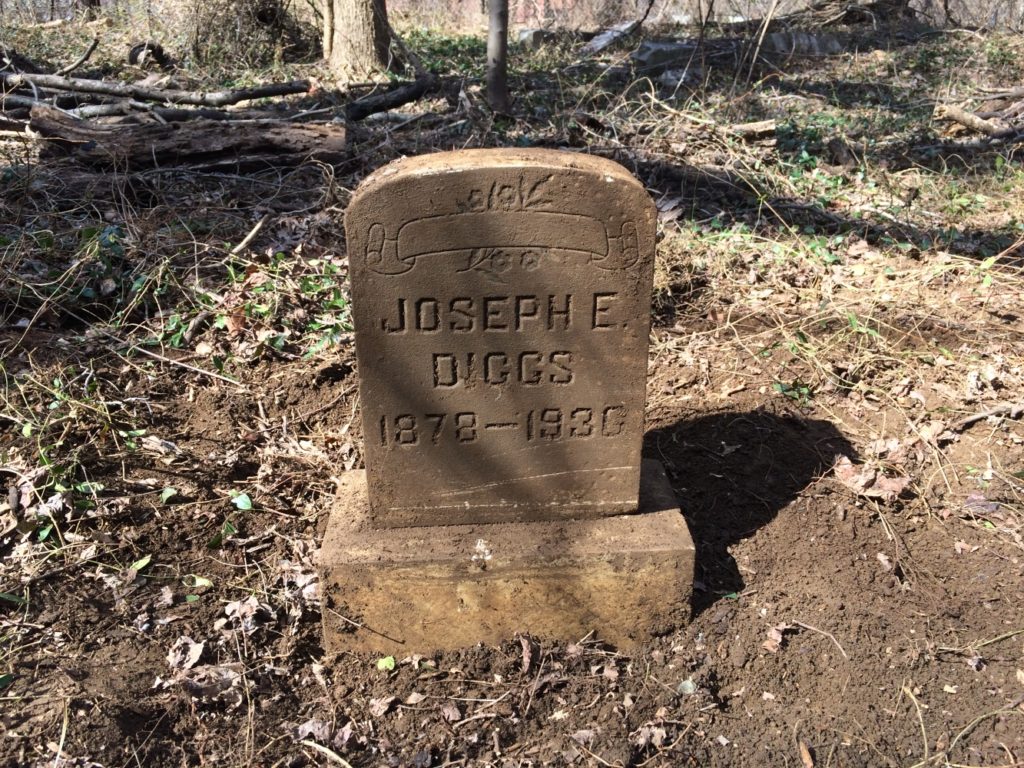
Here are the two stones together:
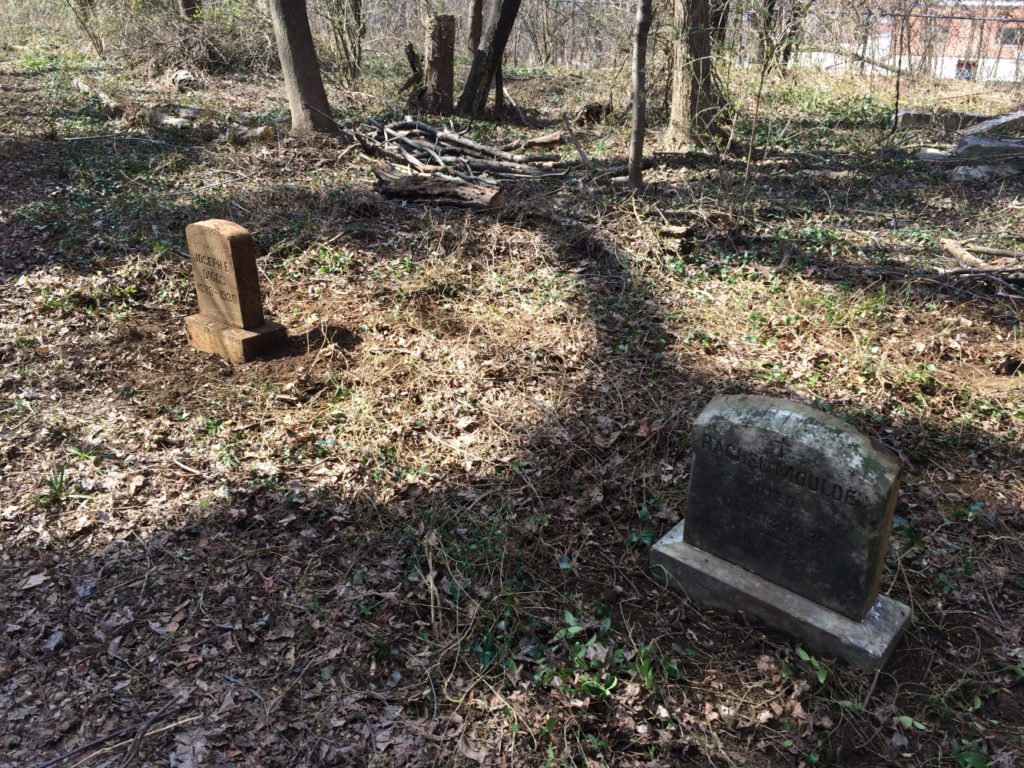
Though, in my mind, a grave-site is not restored until there are some flowering plants planted nearby. So I’ll have to come back, with flowers.
Next was the headstone of Charles Lee, also nearby. It was leaning forward at a 45 degree angle, and I suspected there was some important text, helpful in identifying the grave, buried in the ground.
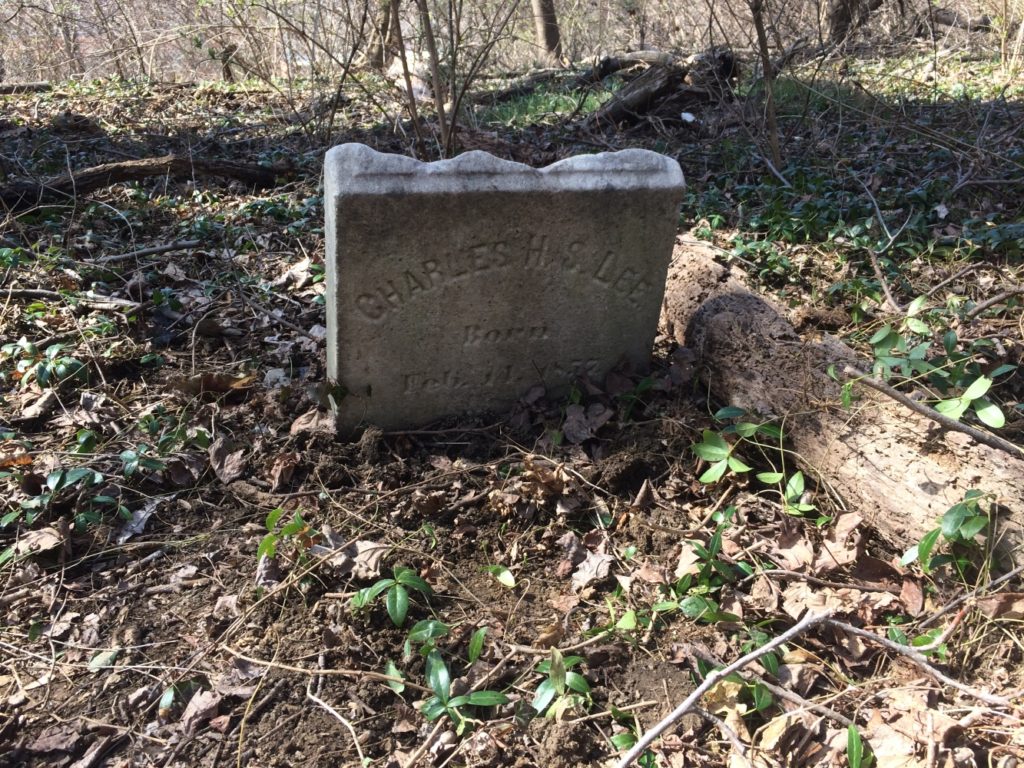
Here is the restored headstone:
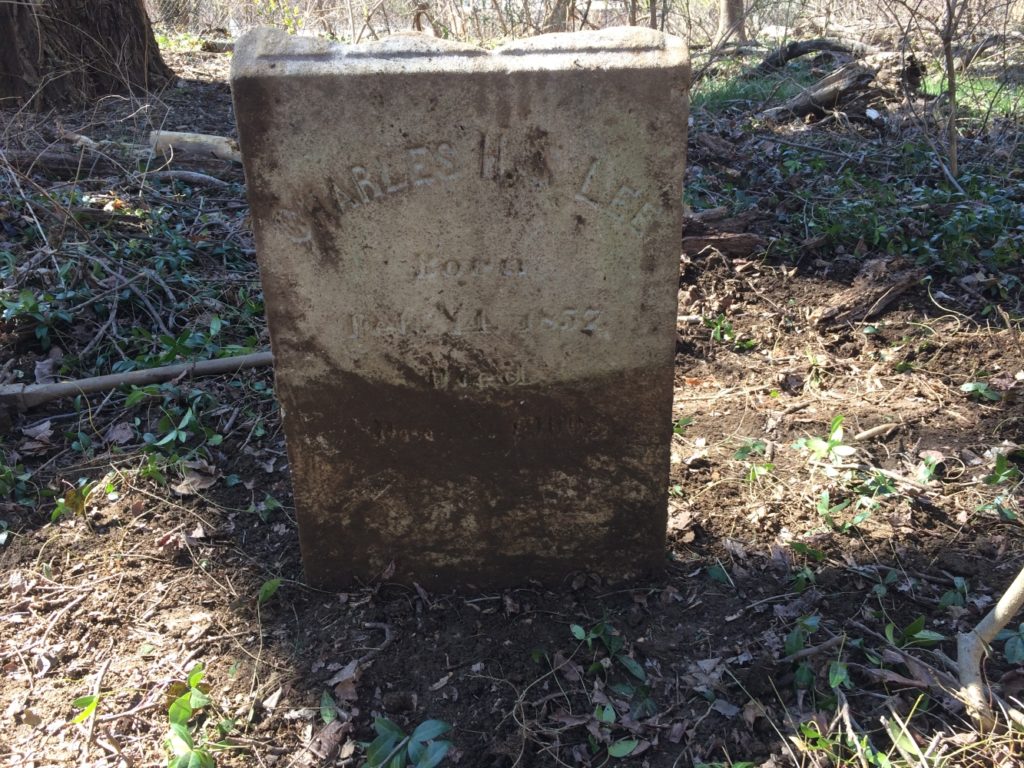
In some ways, the stone looked better before I “fixed” it. It’s dirtier now, with dirt continuing to obscure the text that was buried in the ground. But I figured a few rain storms and it would look a lot better. I should go back and take a picture of the headstone in a couple months and post it here.
Final note, the first two headstones had as the year of death 1936, and Charles Lee’s was 1937. So, at least in the “Potter’s Field,” it appears that people were grouped by the year of death.
Headstone Restoration 0
By Joe Byrne
I entitled this entry headstone restoration 0 because I wanted to mention two other efforts at headstone restoration, done last year.
One is the headstone of Raymond Porter. One day a family came into the cemetery looking for Porter’s headstone (he was the grandfather, or great-grandfather). Since it was summer, and we’d had a lot of rain, it was swampy in this section of the cemetery (Section H) and it hadn’t been mowed in a while. That is, any headstone in that section would be hard to find. The family didn’t find the Porter headstone, even though they had a picture from a genealogy web site showing it intact. (Note those seeking graves of relatives in St. Peter’s Cemetery: come in the winter, before the green stuff takes over, which makes parts of the cemetery inaccessible, and makes many gravestones hard to find).
After they left, I did some sleuthing. I found Raymond Porter’s gravestone! It was at the base of a maple tree, with the stone (and inscription) facing the trunk of the tree, surrounded by tall weeds (mugwort). I removed the weeds and turned the stone around so it could be read.
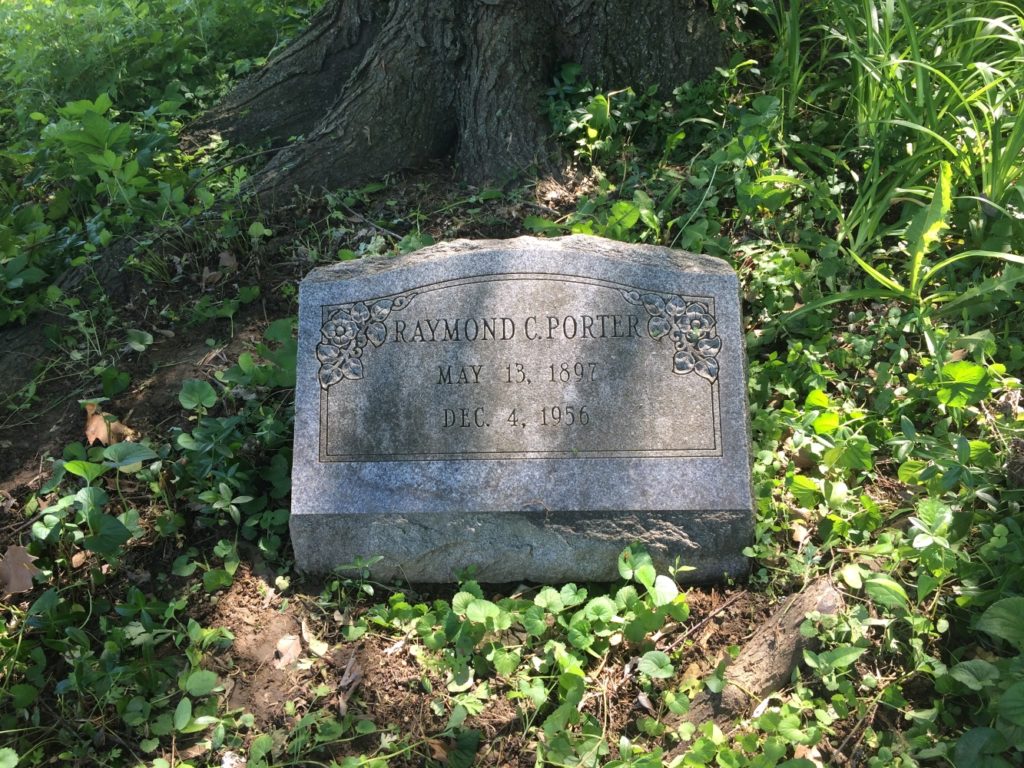
Like the other gravestones, one other step is needed: some nice, native, colorful plants around the headstone.
And now the first headstone at St. Peter’s I ever restored: that of Greta Storm. All I did was level the pediment and place the stone (which was a few fee away, lying flat on the ground), on top of it. I used no cement.
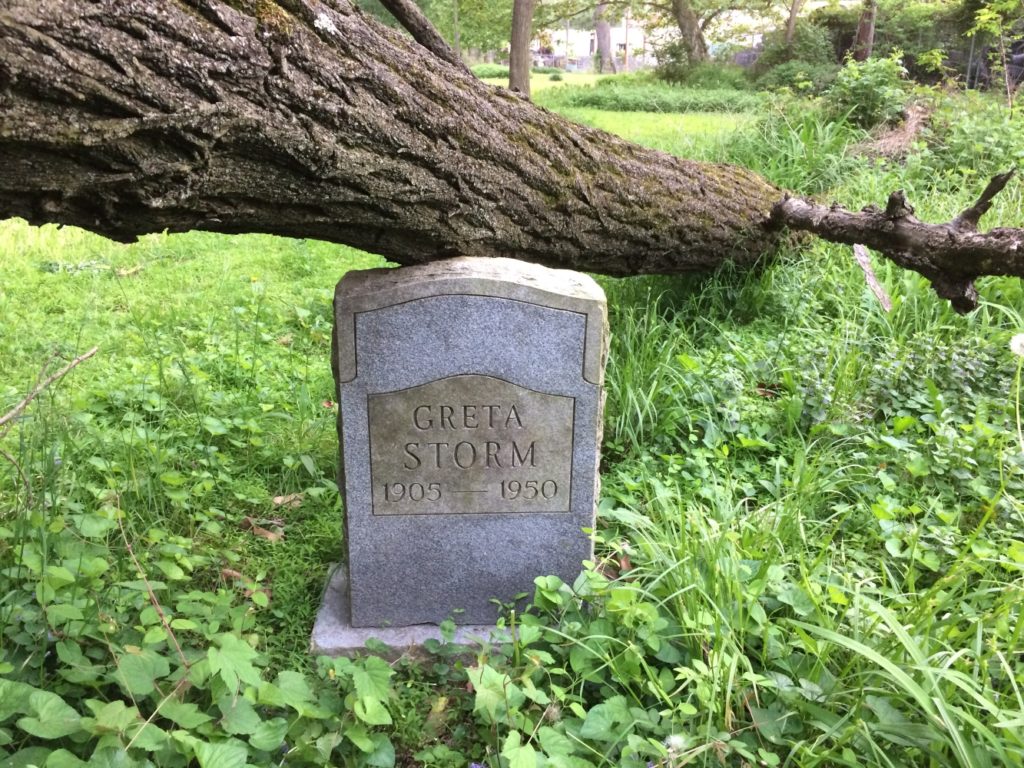
A few weeks after my simple restoration, a leaning locust tree fell upon the gravestone. The un-cemented stone didn’t budge! Pretty good for my first time out.
And the locust tree is still alive! Here is another angle of the headstone holding up the tree, now flowering.
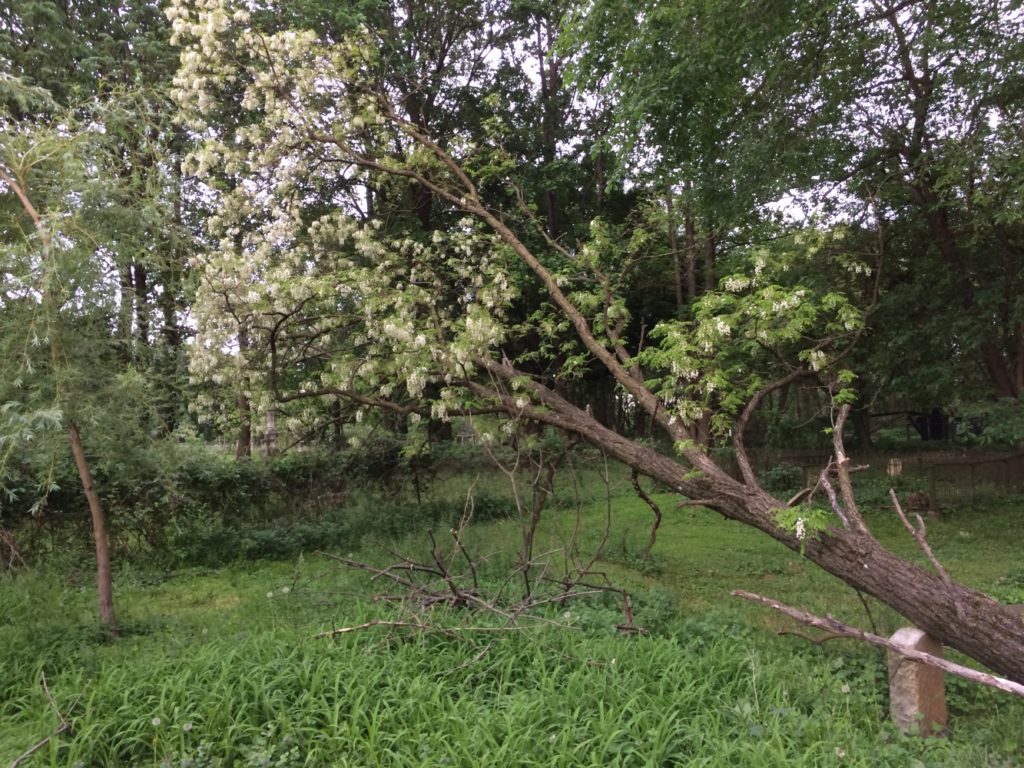
So not only did I restore a headstone, without the use of cement, but I also helped save a tree!
Headstone Restoration 2
By Joe Byrne
Flush with the success of my previous headstone restoration, I went ahead with round 2. I found a headstone in the same line as the others I had restored.
It was the headstone of Emma Carter:
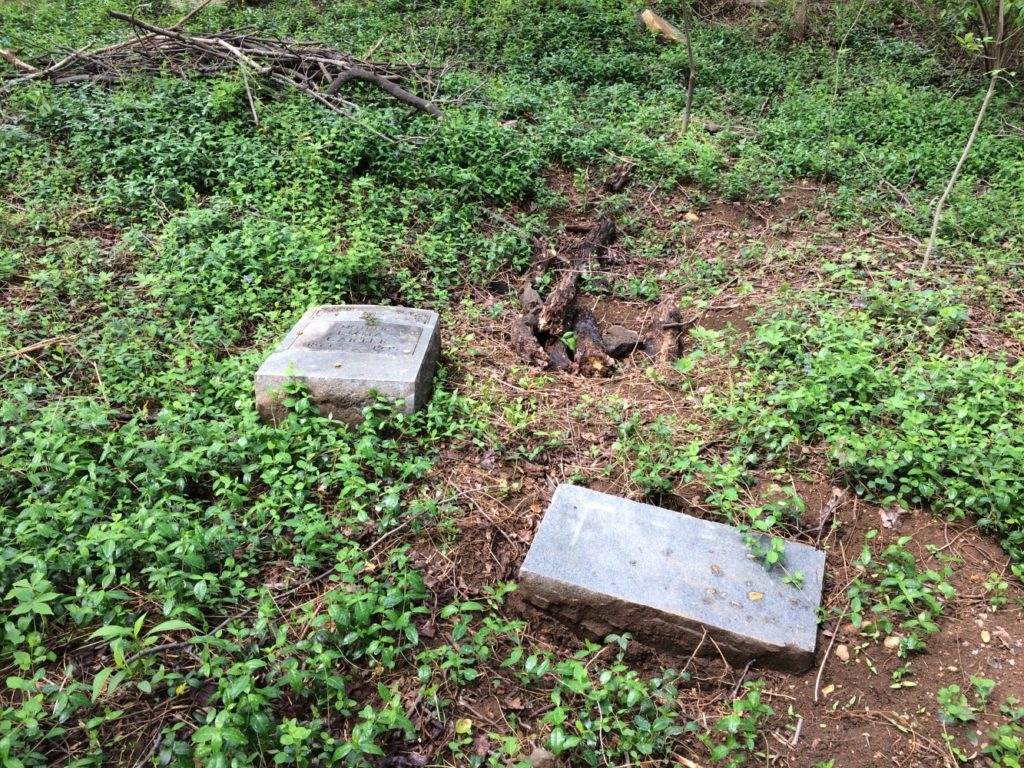
First a quick note on how/why I choose a particular headstone for fixing. My first criteria is the legibility of the inscription. For many of the headstones–particularly those carved of soapstone, limestone, and marble–the inscription has long since been worn away by the elements. That is rarely the case with stones, like this one, made of granite. So granite stones are more likely to get my attention, in regards to restoration, than non-granite stones. In my mind, it doesn’t make sense to spend a couple hours and quite of bit of muscular energy to restore a stone that is blank!
In my previous installment, I showed how I accidentally found a buried headstone that, once unearthed, was remarkably intact (Joseph Digg’s headstone). Well, sometimes you find something underground which is an unpleasant surprise (and I don’t mean skeletons!). Such was the case with Emma Carter’s headstone.
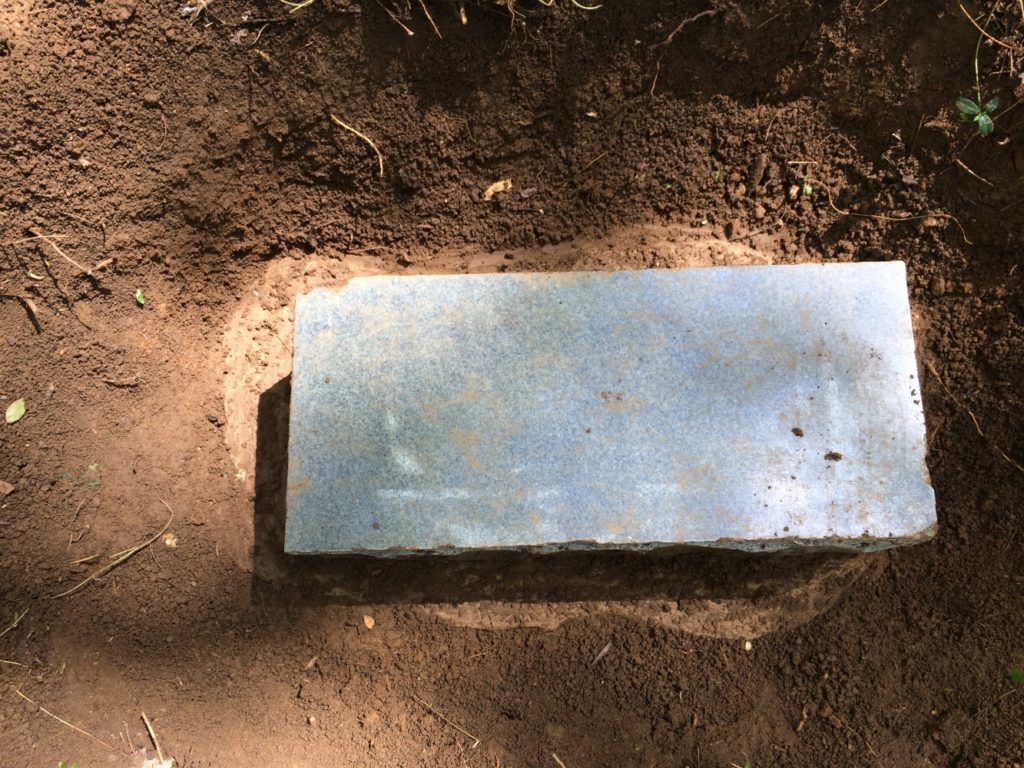
In order to fix the headstone, I had to fix the pediment (the bottom block on which the headstone sits). I did a little digging and tried to use a crow bar. It wouldn’t budge. I dug some more, and then more. That’s when I discovered that underneath the pediment (which was about 2 and half feet tall) was a skirt of cement that went down into the ground another two feet.
Not all pediments have such a skirt. Having one makes it much harder to fix. I’m guessing that a hole was dug, cement was poured into it, and the pediment lowered into the pool of wet cement. If so, they lowered it crooked, so that the headstone had to be placed upon the pediment at an angle (and the ground shifted perhaps). Eventually and inevitably the headstone fell off.
I don’t know if the cement skirt was originally part of the grave. I haven’t dug up enough headstones to know if that’s common or rare. It might have been part of a previous restoration effort. If so, as in some cases, in the name of stability and longevity, the “restoration” made things worse. That is why I am loathe to use cement when I fix headstones. If I set them up straight, and they’re heavy enough, that should be enough. And if they get knocked down, I can pretty easily put them back up. Not so with stone with a crooked pediment set in cement.
That’s why I gave up on Emma Carter’s stone for the moment. I will have to come back and do a lot more digging. In the meantime, I set Emma Carter’s stone upright, nearby.
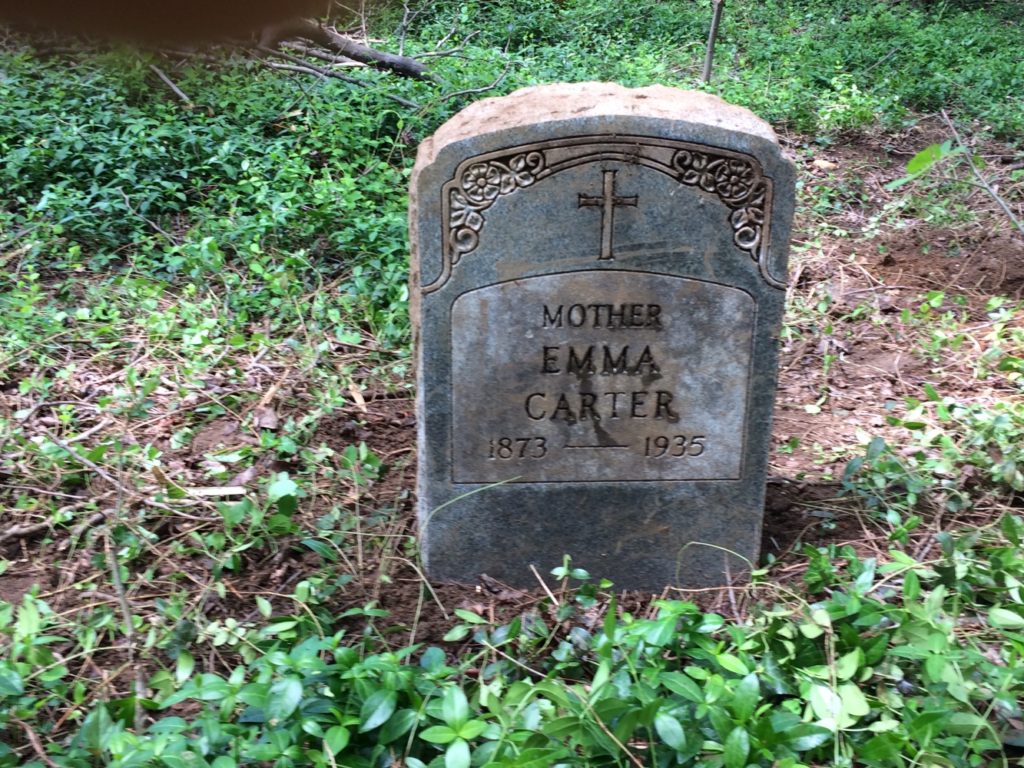
Snowy Day at St. Peter’s Cemetery
Last week we had a bit of snow in the cemetery. It always makes for a picturesque scene. Here are some pics.
